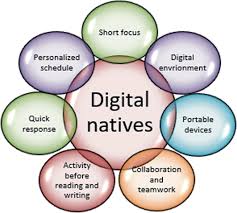Kirschner and some of the myths associated with Prensky's findings.
As a college student navigating the very “digitally native” world we’re said to thrive in, I find Marc Prensky’s digital native vs. digital immigrant divide to be both insightful and limiting. In his 2001 theory, Prensky argued that those born into the digital age “digital natives” have fundamentally different brain wiring and learning styles than older generations, or “digital immigrants.” At first glance, this seemed like a useful framework to explain why my generation is so comfortable with smartphones, social media, and online tools. But looking deeper—and especially through Paul Kirschner’s critiques—it’s clear the theory may be doing more harm than good. Kirschner, in The Myths of the Digital Native and the Multitasker, directly challenges Prensky’s claims. He argues that the idea of “digital natives” being naturally adept at technology and multitasking is a myth. Research supports this: just because we grew up with tech doesn’t mean we inherently know how to use it for effective learning. In fact, multitasking (which many assume is second nature for us) has been shown to impair academic performance. I’ve definitely experienced this firsthand, switching between tabs during Zoom classes or scrolling TikTok while studying always ends in a less productive session. Moreover, Kirschner calls out the educational danger of assuming that students need content “gamified” or presented like a YouTube video in order to learn. It makes us seem shallow, when the truth is, meaningful learning still depends on focus, depth, and practice, regardless of how “native” we are to the digital world.
In my opinion, it’s time we shift the conversation from “digital natives” to “digital learners”, a term that suggests growth, guidance, and potential. We’re not born with digital wisdom. We have to develop it.





Comments
Post a Comment